We’re blessed to live, work and play in some of the world’s most pristine and breathtaking settings. These are bucket-list destinations for adventure seekers, nature lovers and wildlife enthusiasts.
Guided by Pursuit's Promise to Place, we feel a strong sense of duty to care for the land. As part of this stewardship, we endeavor to help preserve and protect its ecology and educate our guests on best practices.
Seeing wildlife—whether an impromptu sighting or on a guided adventure—is a magical and memorable experience. Our professional outfitters and tour operators are well versed in responsible viewing practices and adhere to strict standards.
To prepare for your next wilderness adventure, check out our tips on viewing etiquette that will help keep you—and the animals—safe.
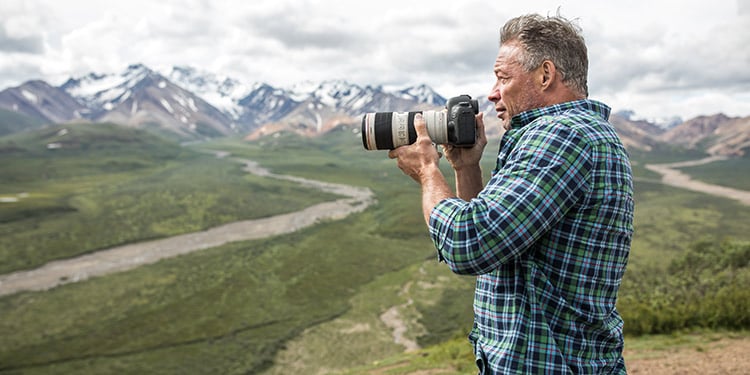
This is absolutely critical for your own well-being and for that of the animals you encounter. While travelling along a scenic wildlife corridor—like the Icefields Parkway linking Banff and Jasper national parks or at Logan Pass in Glacier National Park—it may be tempting to pull over at a safe place on the side of the road; it's best to do so at a designated parking area. See links below for more tips from national parks staff. Sightings in high-traffic areas often cause road congestion and ‘wildlife-jams’, which can create undue stress for the animals.
Please always stay in your vehicle. It is never safe to approach a wild animal. Use a pair of binoculars—a great addition to your packing list—to take a closer look. A zoom or telephoto lens will help capture the moment on film.
The same can be said for marine life encounters. Whale SENSE, a program followed by Kenai Fjords Tours in Alaska, is a great resource for respectful on-the-water wildlife viewing. If in doubt, use the ‘thumb rule’. Simply close one eye and hold out your thumb. Is the entire animal hidden from your line of sight? If the answer’s yes, then you’re in a safe spot.
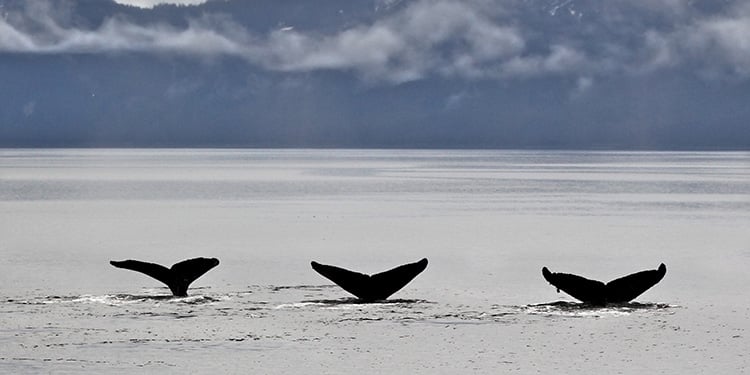
While making your presence known on hiking trails—especially in the backcountry—is a standard safety precaution to prevent surprise encounters, it's equally important to avoid making loud noises when observing wildlife in its natural habitat. If you’re viewing from a vehicle, best practice is to not roll down your windows at all to avoid startling or frightening wildlife. And also be sure to turn down your music. Speak to your fellow travelers in a quiet, calm voice. Keep your movements slow.
Also avoid using flash photography, as this can create undue stress. And remember, wildlife sightings are exciting and often result in slow moving traffic. This is especially true on single-carriageway scenic routes like the Bow Valley Parkway in Banff, the Denali Park Road in Alaska, the Going-to-the-Sun Road in Glacier National Park, Montana, and the road between Maligne Canyon and Maligne Lake in Jasper. If you encounter a "wildlife-jam", please refrain from using your horn.
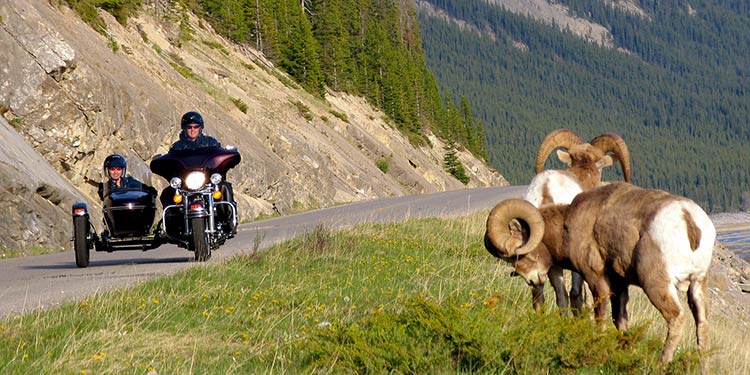
Tensions run high during rutting season and males naturally become more aggressive. Jasper, Banff and Glacier national parks are home to large herds of elk, mountain goat, deer and bighorn sheep. For elk, this season runs between late-August and mid-October. Deer generally rut mid-September through mid-November. Mountain goats mate between late October and early December, and the season for bighorn sheep are the last two months of the year. Peak breeding season for moose, which are more solitary creatures, is the last few weeks of September. Also, know that spring is fawning, kidding and lambing season, and maintaining a respectful distance will help alleviate stress for mothers and their offspring.
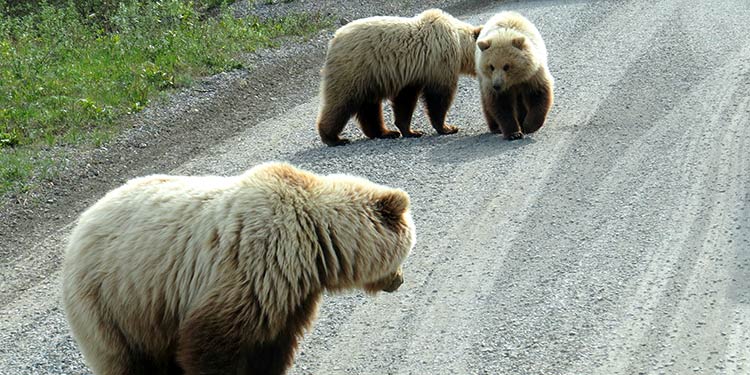
Animals in the wild should never depend on humans for food. This includes the mountain goats at Logan Pass in Montana, deer in Jasper, grizzly bears in Denali National Park, puffins in Kenai Fjords National Park and even the adorable hoary marmots that live in Banff National Park. Also, if you’re camping, please store your food appropriately. Exploring a lakeside, or mountaintop trail? Throw all waste into a bear-resistant garbage disposal—or pack it out with you. And remember—no matter how cute, feeding a wild animal takes away the healthy fear of humans that makes it wild.
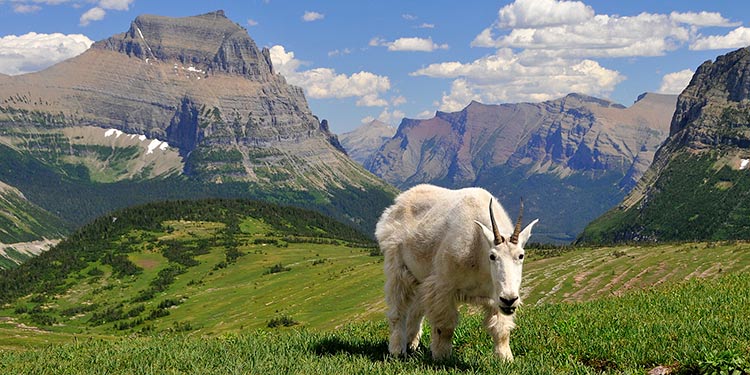
The wondrous experience of viewing wildlife in its natural habitat is powerful and promises a lifetime of memories. However, our presence should never make a lasting impression. Always try to minimize your impact on flora and fauna when visiting a national park or protected wildness area. Walk gently, observe respectfully and leave without a trace.
While it's a genuine thrill, viewing wildlife in national parks—whether in the mountains or on the ocean—is tricky business. It's best to connect with the teams at national parks for more in-depth advice and to answer any questions you may have. For more information, check with the experts at national parks including Denali National Park, Kenai Fjords National Park, Glacier National Park, Banff National Park, Jasper National Park and Waterton Lakes National Park.
We are building a team of passionate people determined to make a difference in the places we love. Every effort counts. Meet more of them here and discover how Promise to Place is the real deal.
Learn More